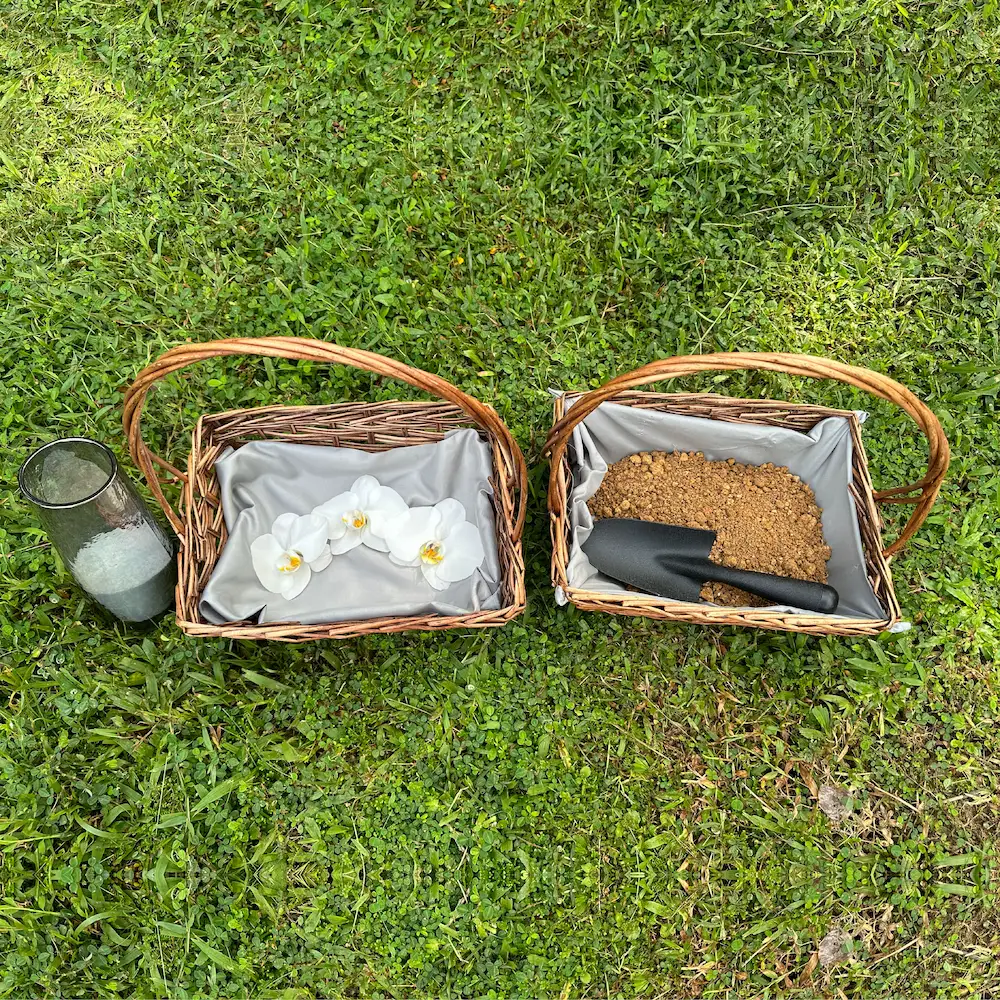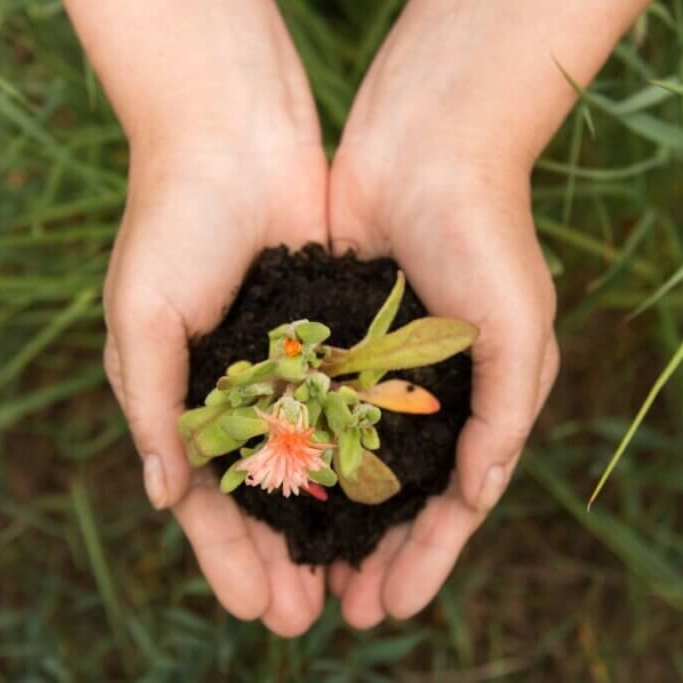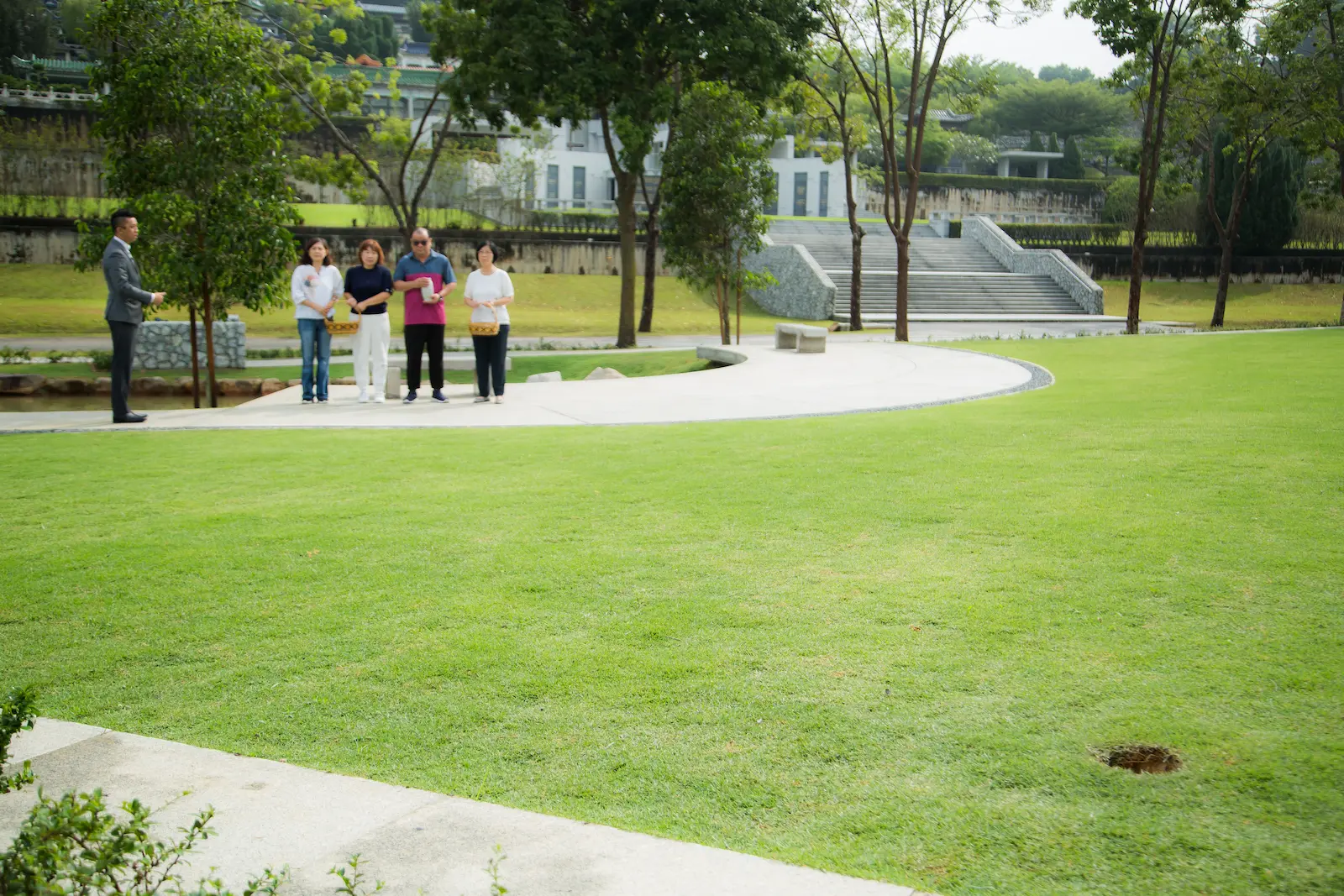
In June 2023, Negeri Sembilan saw the soft launch of Eco Burial. By October of the same year, Malaysia’s first “ash burial” took place at Xiao En Memorial Park. Looking back, it has been nearly a year since these milestones. The utilization of Xiao En’s ash burial garden has been steadily increasing, and online inquiries are abundant. We are thankful that major media outlets in our country have promoted the topic of “green burials” and provided a platform for discussing ash burials. This has allowed the public to explore the concept of eco-friendly burials from multiple perspectives.
| Media reports have documented the history and origins of the “ash burials.”
2023/06
2023/10
|
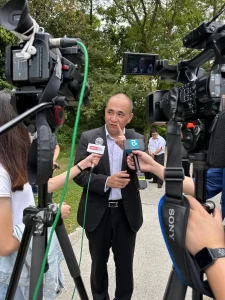 Reflecting on the past year, step by step, through numerous interviews, reports, discussions, and feedback, it is gratifying to see the enrichment of content regarding “ash burials.” This has also led us to deeply consider the direction in which we can progress. Amidst the multitude of voices, each person may have a different focus. Therefore, we aim to re-focus on the thoughtful intentions behind the decisions that are often little known. By using a simple Q&A questionnaire to highlight key points from various media interviews, we hope everyone can rediscover these important areas of focus.
Reflecting on the past year, step by step, through numerous interviews, reports, discussions, and feedback, it is gratifying to see the enrichment of content regarding “ash burials.” This has also led us to deeply consider the direction in which we can progress. Amidst the multitude of voices, each person may have a different focus. Therefore, we aim to re-focus on the thoughtful intentions behind the decisions that are often little known. By using a simple Q&A questionnaire to highlight key points from various media interviews, we hope everyone can rediscover these important areas of focus.
Q: What was the initial blueprint for Xiao En’s eco-friendly burial plan?
Ans: Xiao En’s decision to promote ash burials was not made overnight. We spent at least 5 – 6 years researching and studying various practices worldwide, considering how to adapt them locally. The original plan was to create a “Central Park” of about 7 acres, incorporating various types of eco-friendly burials such as flower burials, tree burials, ash scattering, and ash burials into one area. However, after careful consideration, we realized that in addition to being environmentally friendly, we also needed to focus on sustainability, particularly the practical feasibility of achieving it. Eventually, through a series of fortunate circumstances, we decided to start with ash burials.
Q: Why did you choose to start with ash burials instead of flower or tree burials?
Ans: We had previously referenced the practices of flower burials and tree burials in other countries and found that they generally involve digging a hole beside a tree or flower, burying the ashes along with the urn. However, the land would be for single-use purposes, and difficult to renew or reuse in the future – which was not very suitable for our needs. Additionally, we also considered that flowers and trees will inevitably wither and die one day. In terms of the ongoing maintenance work for the park, this would pose certain challenges, requiring more resources to care for these plants long-term. The costs would be relatively higher, which does not align well with the “minimalism” principle of environmental protection. If the flowers and trees are not properly maintained, it could cause additional disappointment and grief for the families. Therefore, whether in terms of practical implementation or environmental friendliness, we felt that ash interment burial was a relatively more ideal option.
Q: How does the “environmentally-friendly” aspect of ash burials work?
Ans: “Environmental friendliness” has always been a topic with ample discussion, and different countries have varying degrees of eco-friendly practices. We focus more on “how to be more environmentally friendly.” (1) Firstly, by using energy efficiency and simplicity to reduce the carbon footprint. Ash burials, by eliminating the elaborate funeral procedures, reduces the consumption of many resources during the process, naturally lowering the carbon emissions footprint. (2) Secondly, by treating the environment in a more natural way, making good use of the existing ecology in the soil, such as microorganisms, to naturally decompose the ashes, reducing the burden on the soil. (3) Thirdly, by taking a forward-looking, sustainable ecological perspective. Once the ashes have fully transformed into fertile soil nourishing the ecology, the land will have the opportunity for perpetual recycling and renewal, avoiding the need for continuous development of new land.
Q:How do you ensure that the ash naturally decompose into nutrients in the soil?
Ans:We have drawn insights from the experience of ash burials at places like Taiwan’s Dharma Drum Mountain, which has operated successfully for over a decade. However, there’s no one-size-fits-all approach, as it greatly depends on local soil quality and ecology in our parks. Therefore, in our ash burial garden, we regularly monitor soil quality to ensure pH levels are suitable for human ashes, without compromising natural plant growth like grass. From a soil ecology perspective, human ashes primarily consist of calcium phosphate, decomposed naturally by beneficial microbes such as phosphate-solubilizing bacteria and mycorrhizal fungi. To maintain soil balance, before each ash burial, we introduce microbes like phosphate-solubilizing bacteria into burial pits to facilitate ash decomposition. Most importantly, we conduct periodic soil quality checks, monitor soil ecology balance, and adjust maintenance practices as needed.
Q:How long would it take before the ash burial areas can be reused?
Ans: At Xiao En Memorial Park, we have allocated 10 sections for the ash burial park, each approximately 5,000-6,000 square feet in size. Each section requires an investment of about RM 800,000 and can accommodate approximately 2,000 ash burials. Why 10 sections? For example, when the first section reaches capacity in approximately 3 to 6 years, the second section will then be opened for use. It is estimated that each section will be filled every 3 to 6 years. With all 10 sections filled, it is anticipated that the first section will be reused after 30 to 60 years. This interval allows ample time for soil decomposition, fallowing, and renewal before reuse.
Q:How will the ash burial garden be maintained? What resources will be invested?
Ans: The costs of ash burials will primarily cover procedures such as ash grinding, preparation of burial plots, execution of memorial ceremonies, and various administrative fees. Additionally, we require ongoing maintenance of the park, including high-grade Bermuda grass similar to that used on golf courses for ground cover. This involves regular soil quality testing, maintenance of soil ecology, upkeep of lakes and ponds within the park, and care for plants and trees. Preserving a tranquil environment is crucial, allowing visitors to reflect peacefully on pathways or stone benches. It also serves as an educational space where future generations can learn about the environmental contributions of those commemorated here.
Q:Under what circumstances did YB Chew Seh Yong (ADUN Lobak) and Xiao En jointly promote ash burials?
Ans: As early as 5 – 6 years ago, we had plans for eco-friendly burials. YB Chew Seh Yong (ADUN Lobak) and local community groups in Negeri Sembilan had initially conceptualized eco-friendly burials in 2022. However, practical challenges at that time, such as implementation logistics and the availability of suitable park areas, hindered further action. In 2023, an opportunity arose for us to meet with YB Chew Seh Yong, where we learned about Negeri Sembilan’s government and local community groups’ interest in advancing this initiative. Consequently, on June 2, 2023, the Eco Burial was soft launched at Xiao En Memorial Park, followed by Malaysia’s first ash burial on October 4. Additionally, YB Chew Seh Yong established a funding program to support the B40 community in Negeri Sembilan. Interested Negeri Sembilan residents can inquire at his office. Qualified individuals will be charged a small fee of RM 300 by Xiao En Memorial Park, and the costs will be supported by the YB Chew Seh Yong. Those who wish to make inquiries can contact YB Chew Seh Yong’s office hotline at 012-681 3270.
Q:Are eco-friendly burials a form of innovative funeral practice?
Ans: From our perspective, methods closer to nature reflect a return to primal roots. Like in ancient times, people used simple cloth to wrap the deceased before burying them to naturally decompose back into the earth. This wisdom has existed since time immemorial. Rather than calling it innovation, we see it as a return to nature – a chance to reconsider our place amidst rapid civilization development.
Q:How do we balance eco-friendly burial vs. traditional funeral practices?
Ans: While we’ve studied funeral cultures in different Western and Eastern countries, we prioritise the local customs and cultural essence of Malaysia. Therefore, we do not aim to replace any existing burial methods but instead respectfully continue traditions while meeting the growing societal demand for eco-friendly options. The decision to choose eco-friendly burial respects the departed’s wishes and the support of their loved ones, ensuring future commemoration methods. “Peace in life and death” remains our guiding principle.
Q:Without tombstones, flowers, or markers, how do the living memorialise the departed loved ones, and what do the departed leave behind?
Ans: Some forms of love and connection transcend physical symbols. Families opting for ash burials often move beyond material remembrance, holding the departed’s spirit close in their hearts. Alternatively, Taoist or Buddhist families may use an ancestral tablet for worship and remembrance. Regardless of form, the spiritual contributions of the departed to the environment endure in the eco-friendly environment. As life education integrates into the ash burial garden, the spirit of the departed would resonate with every visitor.
Q:Besides environmental conservation, what is Xiao En’s view on sustainability?
Ans: Over 30 years ago, when Xiao En Memorial Park was founded, we had already begun to consider sustainability factors. Our mission involves making caretaking for our ancestors a lifelong commitment. We continuously plan for sustainable park management and community engagement beyond annual observances like Qingming Festival. Looking ahead, Xiao En Memorial Park aims to serve broader societal needs and provide constructive contributions, fostering symbiosis and sustainability within society’s fabric.
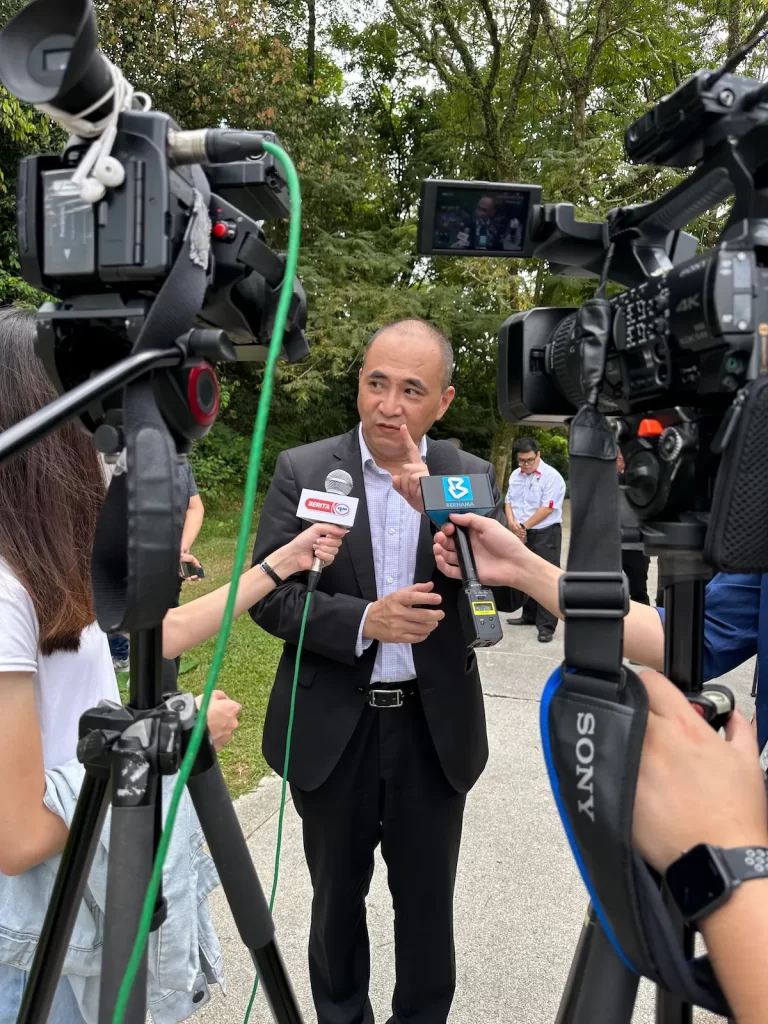 Reflecting on the past year, step by step, through numerous interviews, reports, discussions, and feedback, it is gratifying to see the enrichment of content regarding “ash burials.” This has also led us to deeply consider the direction in which we can progress. Amidst the multitude of voices, each person may have a different focus. Therefore, we aim to re-focus on the thoughtful intentions behind the decisions that are often little known. By using a simple Q&A questionnaire to highlight key points from various media interviews, we hope everyone can rediscover these important areas of focus.
Reflecting on the past year, step by step, through numerous interviews, reports, discussions, and feedback, it is gratifying to see the enrichment of content regarding “ash burials.” This has also led us to deeply consider the direction in which we can progress. Amidst the multitude of voices, each person may have a different focus. Therefore, we aim to re-focus on the thoughtful intentions behind the decisions that are often little known. By using a simple Q&A questionnaire to highlight key points from various media interviews, we hope everyone can rediscover these important areas of focus.
Q: What was the initial blueprint for Xiao En’s eco-friendly burial plan?
Ans: Xiao En’s decision to promote ash burials was not made overnight. We spent at least 5 – 6 years researching and studying various practices worldwide, considering how to adapt them locally. The original plan was to create a “Central Park” of about 7 acres, incorporating various types of eco-friendly burials such as flower burials, tree burials, ash scattering, and ash burials into one area. However, after careful consideration, we realized that in addition to being environmentally friendly, we also needed to focus on sustainability, particularly the practical feasibility of achieving it. Eventually, through a series of fortunate circumstances, we decided to start with ash burials.
Q: Why did you choose to start with ash burials instead of flower or tree burials?
Ans: We had previously referenced the practices of flower burials and tree burials in other countries and found that they generally involve digging a hole beside a tree or flower, burying the ashes along with the urn. However, the land would be for single-use purposes, and difficult to renew or reuse in the future – which was not very suitable for our needs. Additionally, we also considered that flowers and trees will inevitably wither and die one day. In terms of the ongoing maintenance work for the park, this would pose certain challenges, requiring more resources to care for these plants long-term. The costs would be relatively higher, which does not align well with the “minimalism” principle of environmental protection. If the flowers and trees are not properly maintained, it could cause additional disappointment and grief for the families. Therefore, whether in terms of practical implementation or environmental friendliness, we felt that ash interment burial was a relatively more ideal option.
Q: How does the “environmentally-friendly” aspect of ash burials work?
Ans: “Environmental friendliness” has always been a topic with ample discussion, and different countries have varying degrees of eco-friendly practices. We focus more on “how to be more environmentally friendly.” (1) Firstly, by using energy efficiency and simplicity to reduce the carbon footprint. Ash burials, by eliminating the elaborate funeral procedures, reduces the consumption of many resources during the process, naturally lowering the carbon emissions footprint. (2) Secondly, by treating the environment in a more natural way, making good use of the existing ecology in the soil, such as microorganisms, to naturally decompose the ashes, reducing the burden on the soil. (3) Thirdly, by taking a forward-looking, sustainable ecological perspective. Once the ashes have fully transformed into fertile soil nourishing the ecology, the land will have the opportunity for perpetual recycling and renewal, avoiding the need for continuous development of new land.
Q:How do you ensure that the ash naturally decompose into nutrients in the soil?
Ans:We have drawn insights from the experience of ash burials at places like Taiwan’s Dharma Drum Mountain, which has operated successfully for over a decade. However, there’s no one-size-fits-all approach, as it greatly depends on local soil quality and ecology in our parks. Therefore, in our ash burial garden, we regularly monitor soil quality to ensure pH levels are suitable for human ashes, without compromising natural plant growth like grass. From a soil ecology perspective, human ashes primarily consist of calcium phosphate, decomposed naturally by beneficial microbes such as phosphate-solubilizing bacteria and mycorrhizal fungi. To maintain soil balance, before each ash burial, we introduce microbes like phosphate-solubilizing bacteria into burial pits to facilitate ash decomposition. Most importantly, we conduct periodic soil quality checks, monitor soil ecology balance, and adjust maintenance practices as needed.
Q:How long would it take before the ash burial areas can be reused?
Ans: At Xiao En Memorial Park, we have allocated 10 sections for the ash burial park, each approximately 5,000-6,000 square feet in size. Each section requires an investment of about RM 800,000 and can accommodate approximately 2,000 ash burials. Why 10 sections? For example, when the first section reaches capacity in approximately 3 to 6 years, the second section will then be opened for use. It is estimated that each section will be filled every 3 to 6 years. With all 10 sections filled, it is anticipated that the first section will be reused after 30 to 60 years. This interval allows ample time for soil decomposition, fallowing, and renewal before reuse.
Q:How will the ash burial garden be maintained? What resources will be invested?
Ans: The costs of ash burials will primarily cover procedures such as ash grinding, preparation of burial plots, execution of memorial ceremonies, and various administrative fees. Additionally, we require ongoing maintenance of the park, including high-grade Bermuda grass similar to that used on golf courses for ground cover. This involves regular soil quality testing, maintenance of soil ecology, upkeep of lakes and ponds within the park, and care for plants and trees. Preserving a tranquil environment is crucial, allowing visitors to reflect peacefully on pathways or stone benches. It also serves as an educational space where future generations can learn about the environmental contributions of those commemorated here.
Q:Under what circumstances did YB Chew Seh Yong (ADUN Lobak) and Xiao En jointly promote ash burials?
Ans: As early as 5 – 6 years ago, we had plans for eco-friendly burials. YB Chew Seh Yong (ADUN Lobak) and local community groups in Negeri Sembilan had initially conceptualized eco-friendly burials in 2022. However, practical challenges at that time, such as implementation logistics and the availability of suitable park areas, hindered further action. In 2023, an opportunity arose for us to meet with YB Chew Seh Yong, where we learned about Negeri Sembilan’s government and local community groups’ interest in advancing this initiative. Consequently, on June 2, 2023, the Eco Burial was soft launched at Xiao En Memorial Park, followed by Malaysia’s first ash burial on October 4. Additionally, YB Chew Seh Yong established a funding program to support the B40 community in Negeri Sembilan. Interested Negeri Sembilan residents can inquire at his office. Qualified individuals will be charged a small fee of RM 300 by Xiao En Memorial Park, and the costs will be supported by the YB Chew Seh Yong. Those who wish to make inquiries can contact YB Chew Seh Yong’s office hotline at 012-681 3270.
Q:Are eco-friendly burials a form of innovative funeral practice?
Ans: From our perspective, methods closer to nature reflect a return to primal roots. Like in ancient times, people used simple cloth to wrap the deceased before burying them to naturally decompose back into the earth. This wisdom has existed since time immemorial. Rather than calling it innovation, we see it as a return to nature – a chance to reconsider our place amidst rapid civilization development.
Q:How do we balance eco-friendly burial vs. traditional funeral practices?
Ans: While we’ve studied funeral cultures in different Western and Eastern countries, we prioritise the local customs and cultural essence of Malaysia. Therefore, we do not aim to replace any existing burial methods but instead respectfully continue traditions while meeting the growing societal demand for eco-friendly options. The decision to choose eco-friendly burial respects the departed’s wishes and the support of their loved ones, ensuring future commemoration methods. “Peace in life and death” remains our guiding principle.
Q:Without tombstones, flowers, or markers, how do the living memorialise the departed loved ones, and what do the departed leave behind?
Ans: Some forms of love and connection transcend physical symbols. Families opting for ash burials often move beyond material remembrance, holding the departed’s spirit close in their hearts. Alternatively, Taoist or Buddhist families may use an ancestral tablet for worship and remembrance. Regardless of form, the spiritual contributions of the departed to the environment endure in the eco-friendly environment. As life education integrates into the ash burial garden, the spirit of the departed would resonate with every visitor.
Q:Besides environmental conservation, what is Xiao En’s view on sustainability?
Ans: Over 30 years ago, when Xiao En Memorial Park was founded, we had already begun to consider sustainability factors. Our mission involves making caretaking for our ancestors a lifelong commitment. We continuously plan for sustainable park management and community engagement beyond annual observances like Qingming Festival. Looking ahead, Xiao En Memorial Park aims to serve broader societal needs and provide constructive contributions, fostering symbiosis and sustainability within society’s fabric.
| Background Information on Eco-friendly Burials:
According to records, the United Kingdom (UK) is the earliest country to promote environmentally friendly natural burials. In 1993, the Woodland Burial area within the Carlisle Cemetery in the UK established the world’s first modern natural burial ground. Subsequently, the concept of eco-friendly burials has spread to more countries, such as the US, Canada, Scandinavia, Japan, Taiwan, and Australasia. Due to differences in national customs, the methods of eco-friendly burials vary between countries, evolving into diverse options. For example, in accordance with local regulations, some countries offer sea burials, sky burials, ash burials, and scattering ashes in designated areas like lakes, forests, glaciers or other natural settings. Though the specific methods may differ, and the degree of environmental friendliness may vary, the common underlying principle is to be more considerate towards the environment. Even if the approaches are not identical, the core motivation is the same – to be more eco-friendly.
|
Copyright Statement This article and video is original content created by Xiao En website, to whom the copyright belongs to. The content should not be reproduced without permission, otherwise it will be regarded as infringement. Xiao En reserves the right to pursue legal action against unauthorised use of the content.

